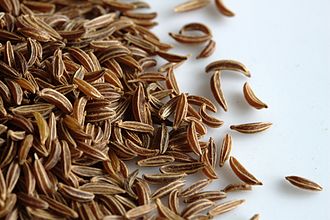The desire to harvest terpenes from a diverse assortment of plants exemplifies just how much these molecules can help us in medicinal ways. Although the word terpene has heightened in popularity with the soaring of the cannabis industry, we’ve all likely been sensing them for most of our lives. Across the botanical kingdom, terpenes waft their magic through the air and into the earth to aid the plants (or even insects) that cultivated them — the ultimate weapons from within.
Terpenes have been traditionally extracted from plants using methods like hydrodistillation or organic solvent extraction such as hexane. Hydrodistillation can take some time, and creating edible products using most organic solvents isn’t much of an option. Often, researchers seek to replace these methods using greener and faster and cheaper techniques.
Subcritical water extraction (SWE) provides an option for terpene extraction, and I know what you might already be thinking. How can the non-polar terpenes be soluble in the most polar solvent? It’s a valid question.
As you’ve likely read in Extraction Magazine before, when you manipulate the temperature and pressures applied to a given solvent, you can reach their sub- and supercritical points. We’ve most frequently discussed this concept regarding sub- or supercritical carbon dioxide, the critical point dividing the two occurring at 31°C and 73.8 bar. Raising the pressure and temperature of the water to reach the critical point, however, requires much more energy, with a critical point temperature and pressure of 374°C and approximately 221 bar. You don’t need to go that high with subcritical water, though, as the phase can be reached using much lower temperatures and pressures.
Regardless, when you tune the temperature and pressure to drive water into the subcritical phase, you enable it to dissolve molecules that are less polar than what regular water at standard conditions can achieve, molecules that are typically pulled out using solvents like methanol or ethanol. This is due to the change in the water’s dielectric constant which simply provides a measure of a given chemical’s polarity.
A researcher used SWE to extract caraway and oregano. Each plant is loaded with terps like carvone, limonene, and carveol for caraway; and carvacrol, thymol, and linalool in oregano. You’ll note that, with the exception of limonene, these are all terpenoids.
SWE of caraway was performed in an accelerated solvent extractor using 5, 10, and 15 min at temperatures of 110°C, 130°C, 150°C, 170°C, and 190°C. Solvent extraction using water, methanol, ethanol, or n-hexane, as well as hydrodistillation were also performed to evaluate the performance of SWE. The maximum carvone extraction occurred at 170°C and 15 min and scaled with temperature up to 190°C, whereupon it diminished. Extraction time didn’t affect carvone concentration. The optimal extraction conditions for limonene were 110°C for 10 min. Running longer and/or hotter led to thermal degradation. Interestingly, while unground caraway led to the highest limonene concentration, grinding to the smallest particle size evaluated (< 425 µm) led to the highest carvone concentration. Of the other solvents tested, water was not useful as an extraction solvent. Hexane led to higher limonene yields, whereas methanol led to higher carvone levels. SWE worked best for carvone. Trans- and cis-carveol also were best extracted by methanol; however, SWE offered comparable yields. The carvone/limonene ratio expresses the quality of the oil, and SWE provided higher carvone yields than hydrodistillation or the other solvents tested.
The extraction conditions used to extract oregano included temperatures of 110°C, 130°C, 150°C, 170°C, 190°C, and 200°C, with extraction times of 5-, 10-, and 15-min. The extraction of carvacrol and thymol was best at 150°C for 15 min. Again, temperature proved to be more important than time. The linalool concentration was highest after 130°C for 10 min. Linalool degraded at higher temperatures. All three terpenoids extracted at higher yields with SWE than with the other solvents, and the author reports that all three terpenoids better extracted with SWE than hydrodistillation on a mg/g basis.
Image Credit: Slick, CC0, via Wikimedia Commons











